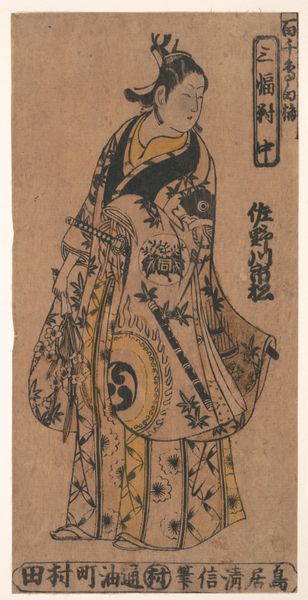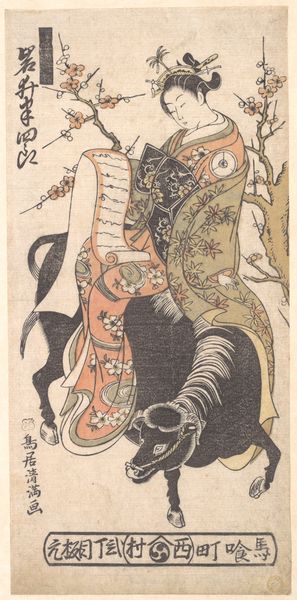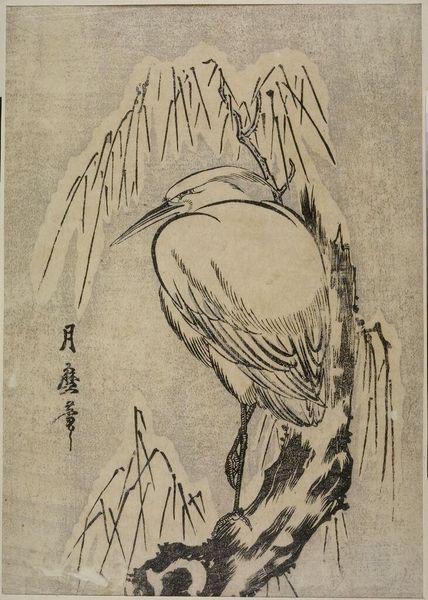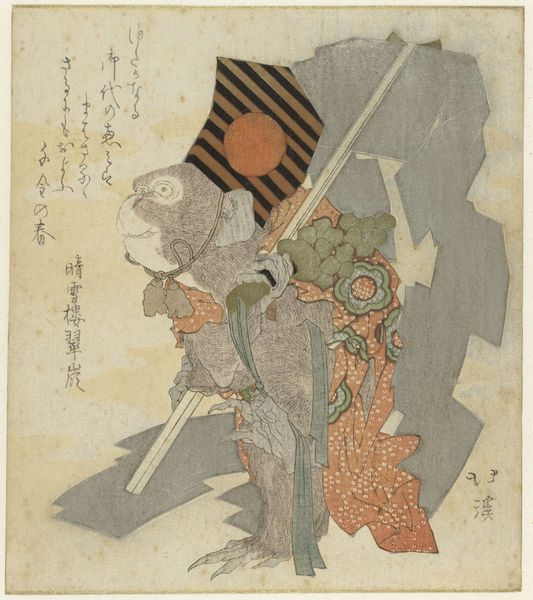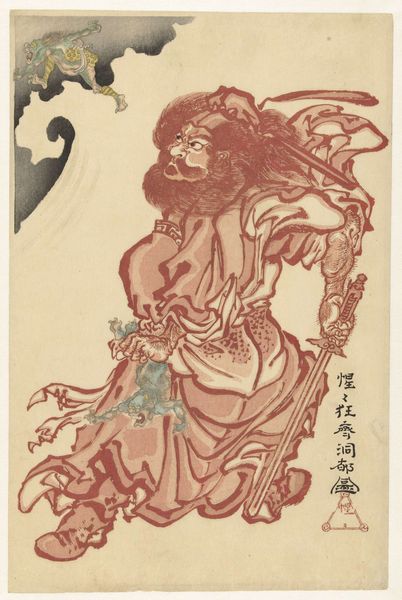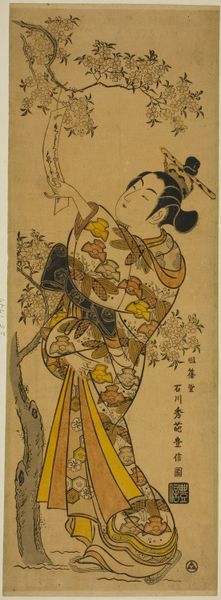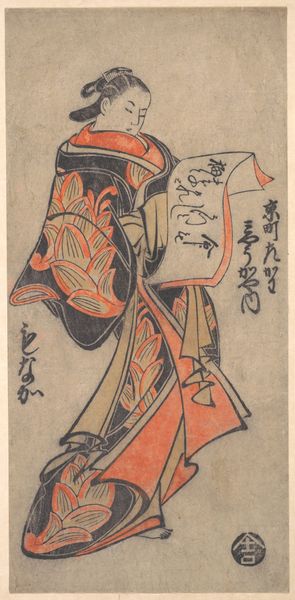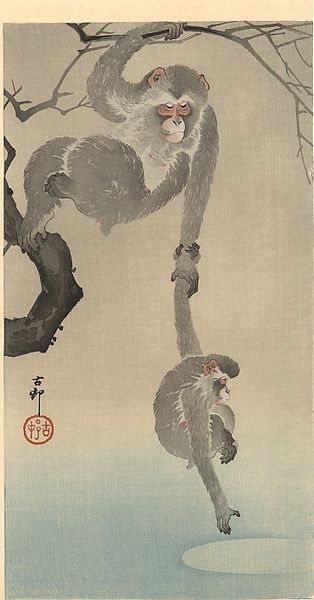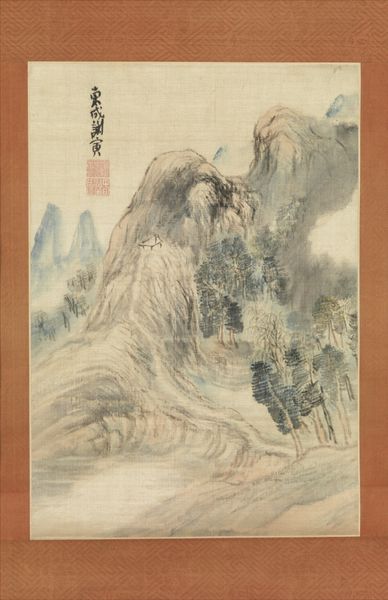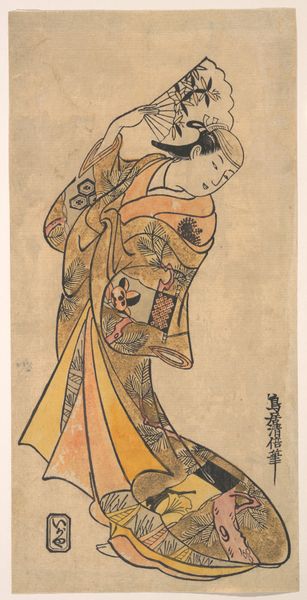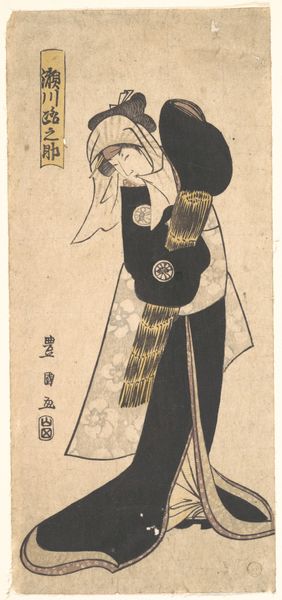
print, ink, woodblock-print, woodcut
# print
#
landscape
#
ukiyo-e
#
japan
#
figuration
#
ink
#
woodblock-print
#
woodcut
#
orientalism
#
watercolor
Dimensions: 14 3/4 × 6 1/4 in. (37.5 × 15.8 cm) (image, ōtanzaku)
Copyright: Public Domain
Editor: So this woodblock print, "Lion Training Cub," was created by Utagawa Hiroshige sometime between 1835 and 1839. It’s currently held at the Minneapolis Institute of Art. I find the composition really unusual – the lions are situated almost vertically within the frame. What are your thoughts on it? Curator: That’s a perceptive observation about the composition. What interests me most is the *komainu* depicted, often translated as lion-dogs. While these figures guard Shinto shrines, the visual representation shifted significantly over time. Knowing this, how might we consider Hiroshige’s piece in relation to the institutional and social context of the time? Editor: That's interesting! Are you suggesting the shift in representation perhaps mirrored societal changes, and Hiroshige’s work then reflects a contemporary understanding or perhaps even a reimagining of tradition? Curator: Precisely. Woodblock prints were widely circulated, making art accessible to a broader audience. Therefore, depictions such as this one contributed to the ongoing negotiation and evolution of cultural symbols within Japanese society. It challenges this idealized exoticism by introducing this comical scene of the lions training. It is clearly made to cater to the masses. Do you agree? Editor: I do! Now that I know that, I realize that my initial reaction was perhaps a naive reading from a Western perspective. Thank you for enlightening me! Curator: Likewise. Understanding how artworks interact with cultural and historical currents enriches our appreciation. I didn't think of it this way before.
Comments
minneapolisinstituteofart almost 2 years ago
⋮
Although lions are not native to China, the Japanese have long referred to them as karajishi, or Chinese lions, because the first lion images seen in Japan came from China in the 9th century. This print’s subject alludes to a well-known Chinese proverb about a lioness testing the strength and stamina of her cubs by pushing them off a cliff. She accepts only those able to climb back up the rocky precipice. In some versions, the lioness conducts this terrible test when the cubs are only three days old. The first line of the accompanying poem probably refers to cubs that survived into their fourth day. The four-day-old Chinese lion although just a little cub,is as graceful as a peony flower.
Join the conversation
Join millions of artists and users on Artera today and experience the ultimate creative platform.
